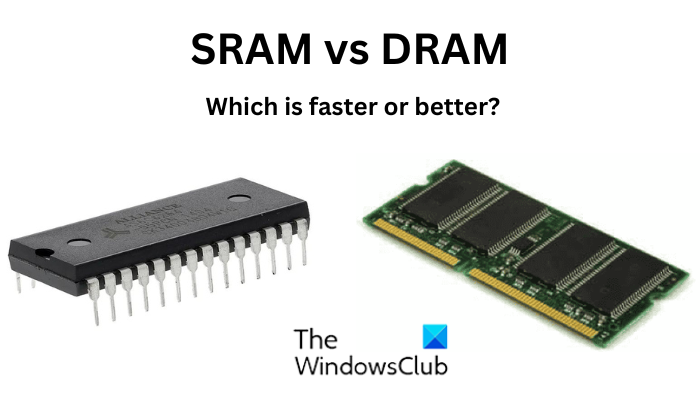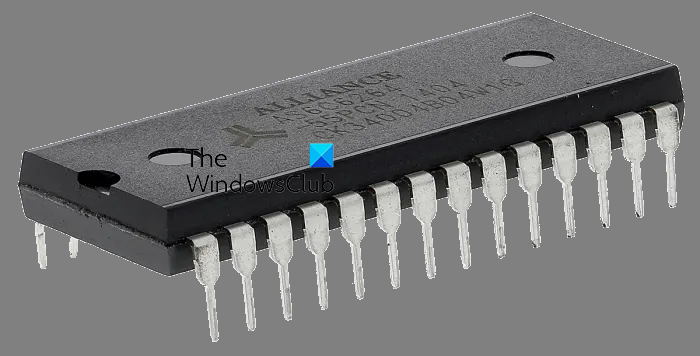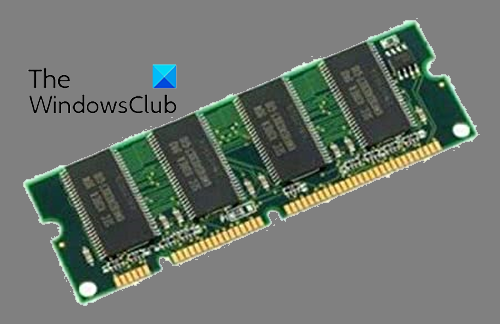In this post, we are going to explain the differences between SRAM and DRAM. These are types of RAM (Random Access Memory) which is an internal memory of a computer. Now, if you are curious about which one is better or faster, this guide will help you understand their advantages and disadvantages better. So, let us check out.

What is SRAM?

SRAM is a type of RAM that stands for Static Random Access Memory. It is typically used in computing systems as a memory cache and not commonly used as the main memory. It consists of up to six transistors and is quicker and energy efficient. This type of memory is commonly used as a buffer cache in drives, routers, printers, etc. You also find it on devices like tablets, phones, and wearables, and it can be embedded into IoT devices like toys, automobiles, industrial equipment, and more.
What is DRAM?

DRAM stands for Dynamic Random Access Memory which is another type of RAM (Random Access Memory). It is a volatile memory which means the data is erased once the system is turned off. It is widely used in computers as the main working memory. It stores every bit of data using a capacitor and a transistor within an integrated circuit.
What are two examples of DRAM?
DRAM is divided into various categories. It is mainly of the following types: Synchronous DRAM (SDRAM), Double Data Rate (DDR) SDRAM, DDR2 SDRAM, DDR3 SDRAM, DDR4 SDRAM, Graphics Double Data Rate (GDDR) SDRAM, and Error-Correcting Code (ECC) DRAM.
- SDRAM synchronizes itself with the system clock allowing for a faster access time and higher bandwidth.
- DDR SDRAM is another type of DRAM that has an upper hand over SDRAM. It can transfer more amount of data per clock cycle as compared to SDRAM. DDR2, DDR3, and DDR4 are enhancements of DDR SDRAM for better performance.
- GDDR SDRAM is one more type of DRAM that is specialized in graphics cards and other high-performance systems.
- ECC DRAM is a type of DRAM that consists of additional circuitry for detecting and correcting errors in memory.
See: What are the signs of RAM failure and how to check faulty RAM?
SRAM vs DRAM; Which is faster or better?
Now, coming back to the main agenda of this post i.e., which is better from SRAM and DRAM. Both types of memory chips have their own advantages and disadvantages.
The primary difference between these two RAMs is the speed and energy efficiency. An SRAM memory chip is faster than a DRAM memory chip. Additionally, it is also more energy-efficient and utilizes less power than DRAM. This is because of the fact that DRAM requires to be refreshed regularly when in use, while SRAM doesn’t require to be refreshed. However, a DRAM can store a large amount of data than an SRAM.
Now, let us take a look at the key differences between SRAM and DRAM in different aspects:
A] Power consumption: SRAM has a lower power consumption than DRAM. This is due to the fact that DRAM requires to be refreshed every few milliseconds, while the same is not applicable to SRAM. Hence, DRAM requires significantly greater power than SRAM to operate.
B] Speed: As we mentioned above, SRAM is faster and more efficient than DRAM. SRAM stores data using flip-flops and doesn’t require periodic data refreshing, unlike DRAM. Also, a small number of transistors is used by SRAM for each bit of data, while DRAM uses a capacitor and a transistor to store data bits making its access time slower than SRAM. So, SRAM has a faster read and write speed.
C] Cost: SRAM is more expensive than DRAM. Let us understand why. An SRAM uses flip-flops that may contain up to 6 transistors and it needs a greater number of transistors in order to store 1-bit data. Now, a DRAM requires only a single transistor and capacitor. Consequently, the production cost of SRAM increases and is more than that of DRAM. So, DRAM is less expensive than SRAM.
D] Density and Storage Capacity: DRAM has more memory density and higher storage capacity than SRAM. Since a DRAM needs a single transistor and one capacitor to store 1 bit in comparison to SRAM which requires up to 6 transistors, a single DRAM module has 6 times greater capacity than an SRAM module.
An SRAM generally has a storage capacity of 1 MB to 16 MB. While a DRAM has a storage capacity of 1 GB to 2 GB.
E] Charge Leakage: DRAM experiences charge leakage due to the use of capacitors. On the other hand, no such problem is faced by SRAM.
F] Physical Placement: DRAM is placed on the motherboard, while SRAM is placed between the processor and the main memory of your computer.
G] Design: SRAM is more complicated in design as compared to DRAM.
H] Area of Application: While SRAM is mostly used as a cache memory, such as a processor’s L2 or L3 cache, DRAM is used as the main memory (RAM) in computers and graphics cards.
DRAM is used in computers and electronic devices where you need cost-effective memory with high capacity. It is used in personal computers, servers, workstations, smartphones, tablets, etc.
SRAM is also used in PCs, workstations, routers, and peripheral equipment. CPU register files, internal CPU caches, internal GPU caches, hard disk buffers, router buffers, etc. are some other areas of SRAM usage. Home-built processor hobbyists also prefer using SRAM instead of DRAM.
Which is more faster SRAM or DRAM?
SRAM is faster than DRAM. It doesn’t require to be refreshed and has a faster access time than a DRAM. The average access time of SRAM is 10 nanoseconds, while a DRAM has a more access time of about 60 nanoseconds which is significantly slower than SRAM.
Both SRAM and DRAM have their own advantages and disadvantages and are used in different areas. For example, SRAM is costlier than DRAM but it offers faster read and write speed. However, DRAM has a greater storage capacity than SRAM. And, SRAM is used as a memory cache, while DRAM is used as the primary memory.
I hope this helps!
Now read: What are the Types of Memory in a computer?